Neopasiphae mirabilisFlower Selection Male and Female Nesting
Photographs © Marc Newman ◦
Great excitement on the discovery of the female Neopasiphae mirabilis. Our stop 20 km north of Mullewa on the Carnarvon-Mullewa Road revealed a nesting site for these bees.
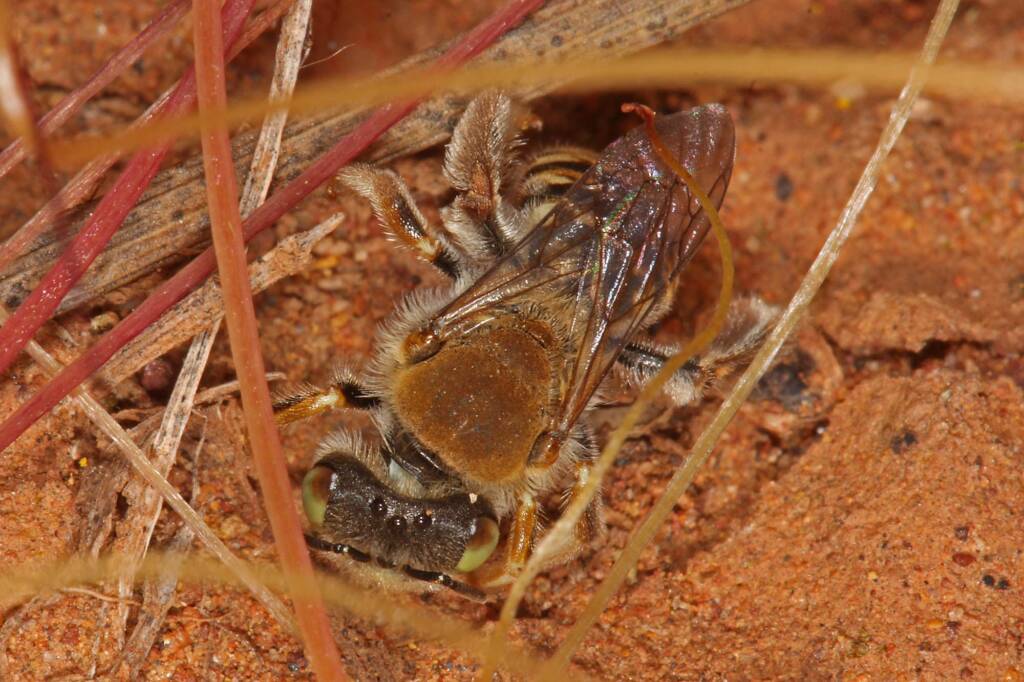
Covering an area of about 10 to 15 metres, along the side of the road, this is typical terrain and looks hard digging. They particularly seemed to like digging under pebbles.

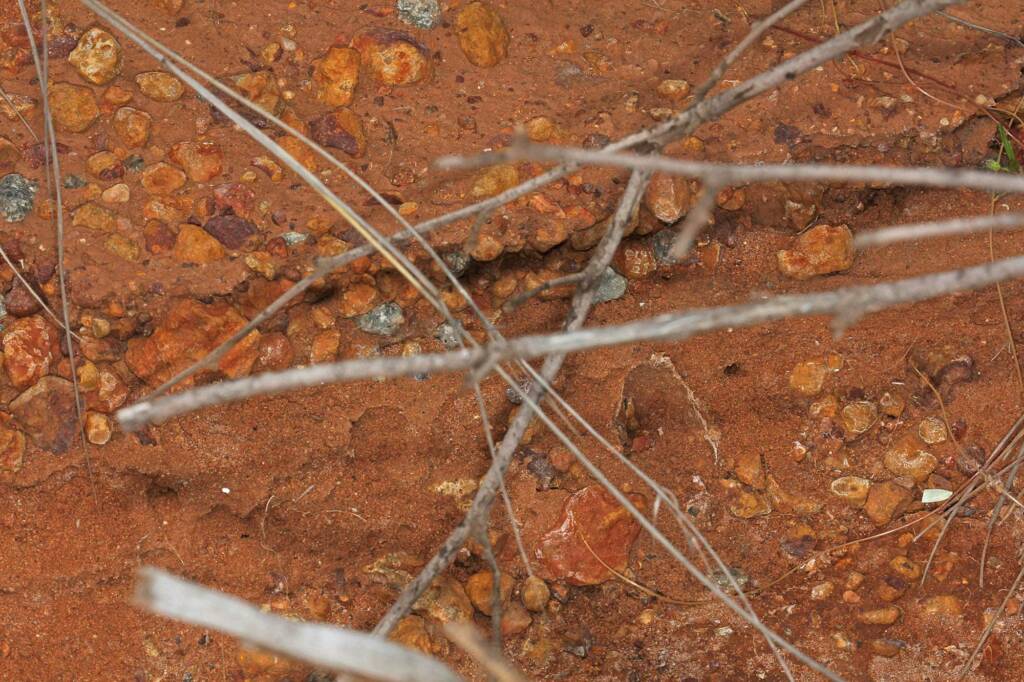

Also in the same locality is the following Felt Ant (female wingless Wasp) patrolling the area. Not sure if she was a problem for the bees.
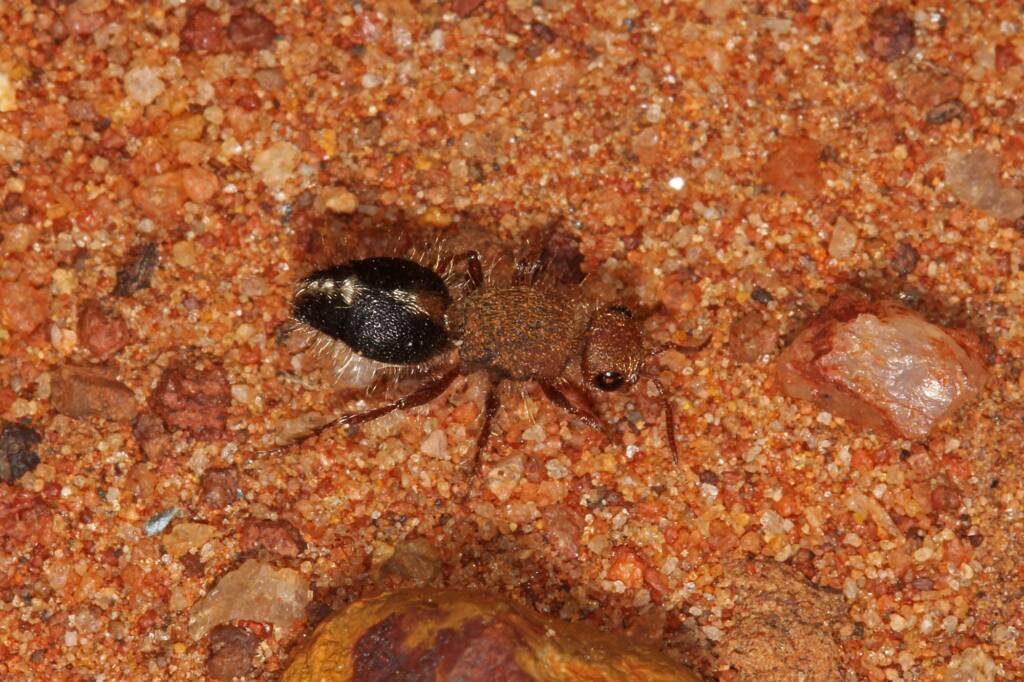
Another Felt Ant, I assume a different species.
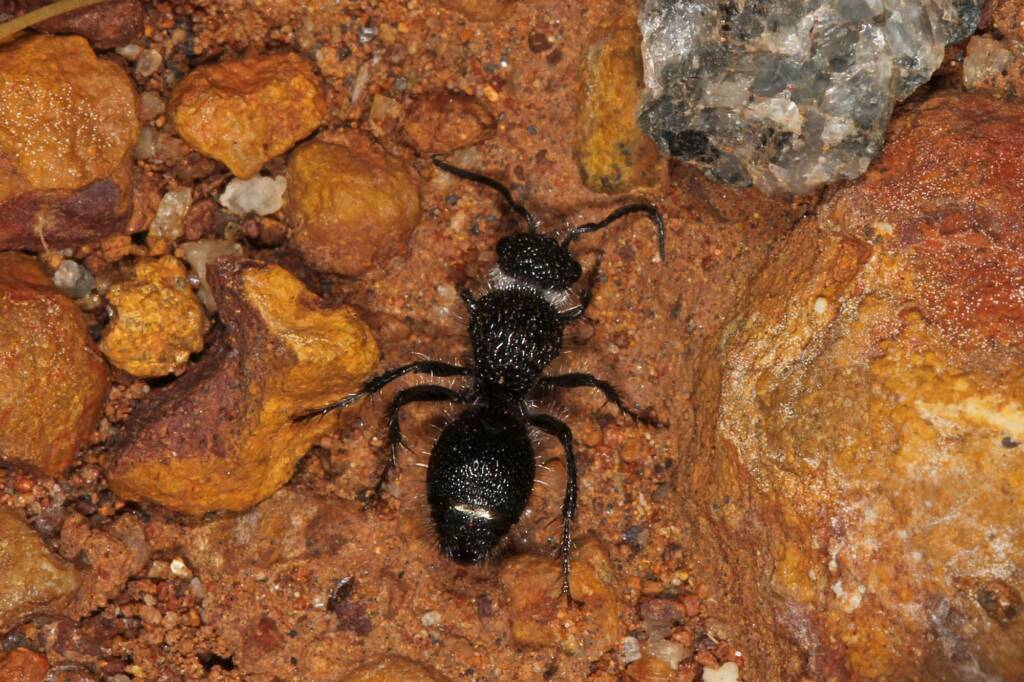
Gasteruptiid wasp, male also patrolling the nesting site. I’m told they do no harm to the bees but I don’t like the look in their eyes 🙂
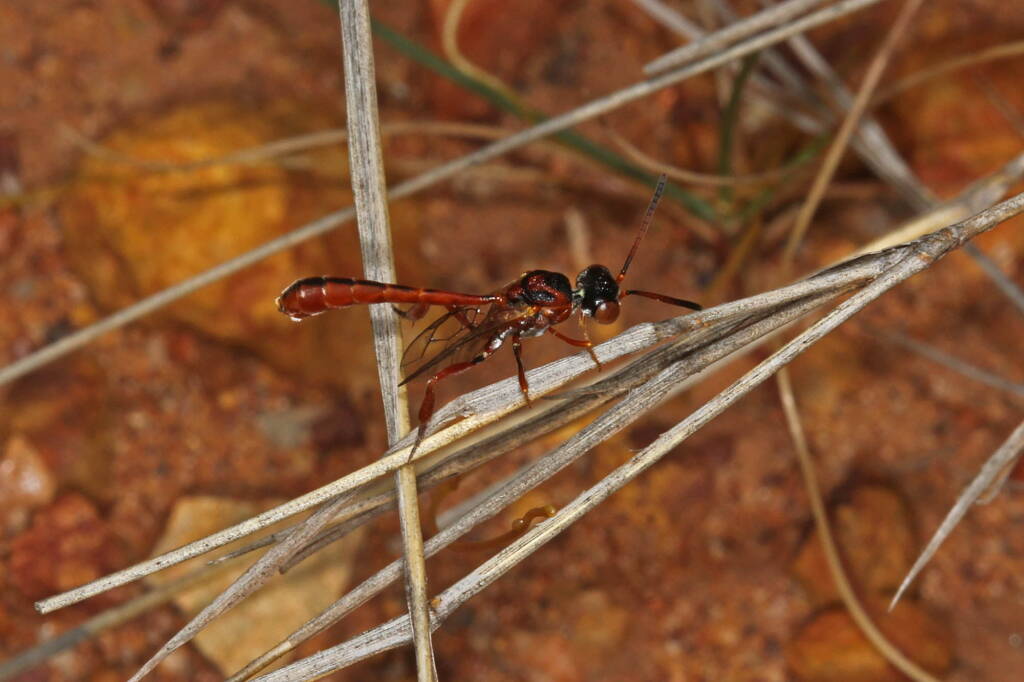
Gasteruptiids are dyed-in-the-wool parasites of bees and sometimes wasps, thus harming individual host´s offspring. In a broader ecological perspective they are doing only limited harm, as they can´t saw off the branch they are sitting on entirely. By their habits they are enhancing species diversity.
Bernhard Jacobi
Footnote & References
- Photographs Neopasiphae mirabilis, Coalseam NP, WA © Marc Newman, Flickr, https://flickr.com/photos/koolbee/albums
Neopasiphae mirabilisFlower Selection Male and Female Nesting
ColletidaeAmphylaeus obscuriceps Hylaeus spp – Masked Bee Callomelitta antipodes Leioproctus Neopasiphae mirabilis Paracolletes crassipes Paracolletes nigrocinctus Trichocolletes
BeesBees Anatomy Bee Behaviour Blogging Bees… Bees – image index Amegilla Bee Apis mellifera Austroplebeia australis Austrothurgus Braunsapis sp Ceylalictus perditellus Colletidae Euryglossinae Exoneura Homalictus Hyleoides bivulnerata Lasioglossum Lasioglossum (Chilalictus) Lipotriches Megachile Meroglossa Stenotritidae Tetragonula Thyreus Xylocopa
